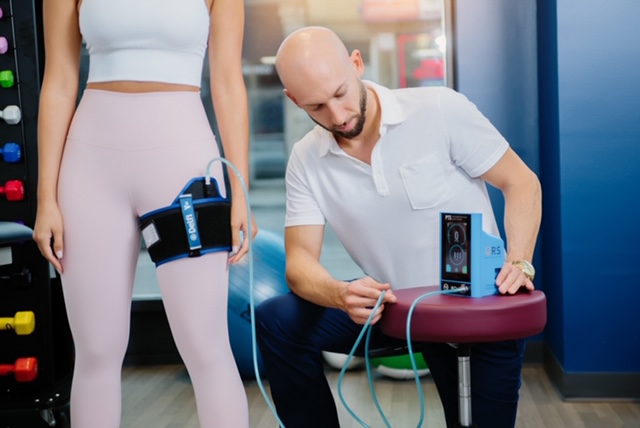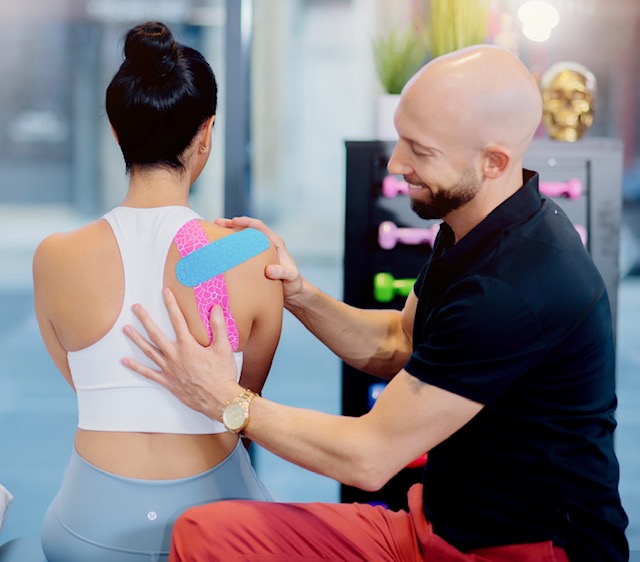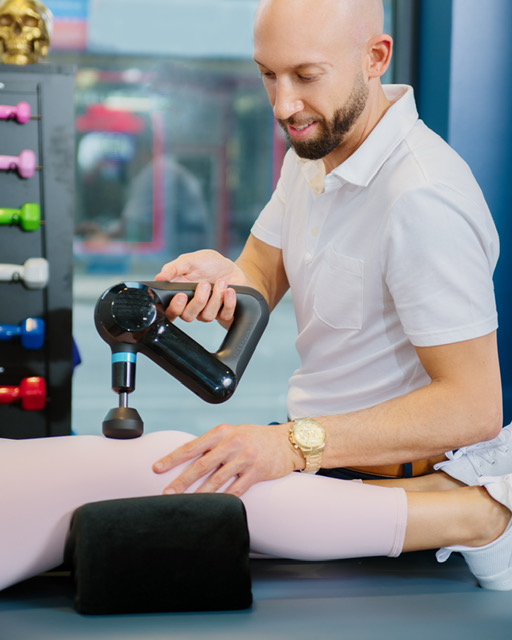Soft Tissue Manipulation
What is Soft Tissue Manipulation?
Soft Tissue Manipulation is a type of manual therapy technique in which a Physical Therapist uses various hands on techniques to apply forces to your muscles, ligaments, fascia and surrounding tissues, in order to break up inelastic or fibrous muscle tissue called “myofascial adhesions.” This technique is used to improve blood flow, release tension, and promote healing in order to improve mobility and function.
Goals of Soft Tissue Manipulation:
- Break up soft tissue adhesions
- Reduce pain and inflammation
- Decrease swelling
- Restore range of motion
- Lengthen muscles, tendons and ligaments
- Improve muscle relaxation
- Stimulate healing


What parts of the body are treated?
Fascia – This is a fibrous connective tissue that protects and supports muscles and organs throughout the body. Inflammation of this tissue causes extreme pain and stiffness.
Muscle – All the major muscles go through a lot of strain and pulls from overuse and trauma.
Tendons and ligaments – Tendons are connections between the muscle and bone whereas ligaments are connections between bone and bone. Injury to these structures can cause severe pain and functional disability.
Nerves – release entrapped nerves
Goals of Soft Tissue Manipulation:
- Break up soft tissue adhesions
- Reduce pain and inflammation
- Decrease swelling
- Restore range of motion
- Lengthen muscles, tendons and ligaments
- Improve muscle relaxation
- Stimulate healing
How Does it Work?
Muscle adhesions can form following an injury or inflammatory process. When new tissues form, they tend to be less elastic and made up of more collagen than the original tissue. This new tissue can pull and cause trigger points of pain. Soft tissue mobilizations help to break up these adhesions in order to improve mobility and decrease pain associated with them.
Soft tissue mobilization can also help stimulate increased blood flow to a particular area. Blood flow can help bring healing mediators to injured tissue in order to help accelerate the healing
process.


Which techniques are used?
Sustained pressure – applying direct pressure on the restricted tissue and holding
Active release technique – focuses on relieving tissue tension via removal of fibrosis/ adhesions that have developed due to repetitive use
Cross Friction – Rubbing across the body of the muscle, tendon, or ligament
Perpendicular strumming – Pushing on myofascial tissue at perpendicular angles
Spiral unlocking – Pushing in clockwise and counterclockwise motions along the restriction
Muscle Energy Techniques – use of muscles own energy in form of isometric contractions to relax the muscles and lengthen them to reduce pain and muscle rigidity and increase range of motion. In this technique the patient is an equal active participant along with the therapist.
Instrument assisted techniques – this involves the therapist using a tool such as a Theragun or Hypervolt massage gun, Graston or other stainless steel tools, Gua Sha tools, Cups, or dry needling
Examples of tools:


Roberts, B. L. (1997). Soft tissue manipulation: neuromuscular and muscle energy techniques. Journal of Neuroscience Nursing, 29(2), 123-128.
https://ptcentral.org/treatment/soft-tissue-mobilization/
What is Soft Tissue Manipulation? (2017, April 24). Retrieved from:
https://study.com/academy/lesson/what-is-soft-tissue-manipulation.html
